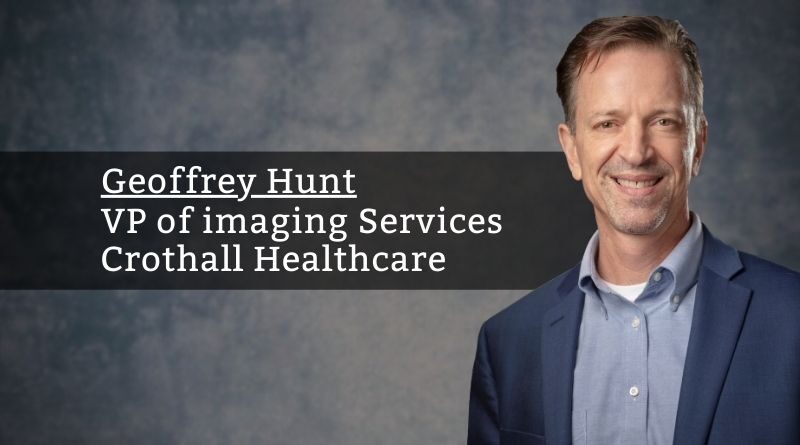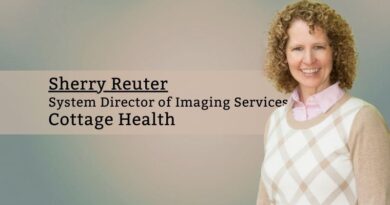Maximize uptime & cost savings for imaging equipment. ISOs are a great choice
By Geoffrey Hunt, VP of imaging Services, Crothall Healthcare
The future of medical imaging will feature technological advances impacting workforce management, workflow & diagnosis, and wearables. The future is automated, maturing through artificial/augmented intelligence assistance to partial and complete automation for many diagnoses. Imaging equipment continues to be refined, including advancements in molecular diagnostics and therapies. Wearables are moving fast; regulatory agencies are scrambling to define clearance guidelines for these devices.
The promise of technology is real, and so are the day-to-day challenges of caring for patients in an increasingly complex, costly, and resource-constrained environment. Cost, quality, and delivery are the pillars of any successful business, including hospital operations. Caregivers work to balance this equation at the patient level. Supply chain works to balance this equation behind the scenes. Service providers bring this conversation full circle, deploying technology to improve service quality while reducing costs.
Service delivery is woven into the fabric of healthcare providers. In-house imaging service engineers are part of the hospital. Engineers from original equipment manufacturers (OEMs) and independent service organizations (ISOs) earn their way into a hospital’s culture. Flexibility, communication, and tailored solutions that focus on positive patient outcomes create a foundation for successfully controlling service costs. In my experience working for large OEMs, we described the need for flexibility as “needing to teach an elephant to dance.” ISOs on the other hand develop custom service delivery plans by identifying the customer’s needs and shaping a service plan around the desired outcome.
Optimizing the cost of imaging equipment service likely requires a comprehensive strategy including in-house, ISO, and OEM elements.
Complete Visibility into Imaging Equipment Inventory. First and most important to a successful imaging service program is maintaining an accurate inventory and understanding the location and state of every asset in the hospital or health system, then developing a service delivery plan based on the unique equipment mix. Complete visibility helps the healthcare technology management department determine the ideal staffing and skill set needed to keep the inventory in good running order.
Assessing an equipment inventory can help to identify the benefits of standardizing equipment. Standardization has the potential to simplify employee training, minimize errors, and reduce maintenance costs and the number of service contracts. The assessment might show that standardization would lead to lower spare parts prices or lower training costs.
Computerized Maintenance Management System (CMMS) Saves Money
Labor Costs Through Improved Efficiencies. Labor is a big part of any organization’s budget. Workforce management starts with appropriate staffing levels. CMMS software helps accurately estimate labor hours for preventive maintenance, ensuring staffing levels match the workload while minimizing overtime costs. This labor analysis can determine when adding staff or creating surge capacity with overtime is more efficient.
CMMS data helps organizations make effective replace-or-repair decisions. Maintenance software tracks not only the age of the equipment but repair history and frequency, uptime, and many other metrics—helps to decide when it’s cost-effective to replace an asset vs. repairing it. Using one platform to house all the device information collected connects each of your facilities, giving complete inventory visibility and providing equipment priority replacement guidance and justification so informed decision-making can begin.
Hospitals must track equipment throughout its lifecycle. As programs mature, data mine to find additional opportunities to positively impact asset uptime and reliability. Considering the sheer amount of assets present in the facility, a comprehensive CMMS captures a wealth of data on each asset. This data provides a complete picture of equipment performance and cost. By analyzing this data, managers can make informed decisions that reduce maintenance costs, improve productivity, effectiveness and performance of the radiology maintenance program.
Whether the future of your service program is primarily in-house or outsourced, the design elements and considerations are similar. A successful program requires intensive effort to design, implement, and maintain. The in-house option can be lower cost…if the program completes most of the service using in-house engineers. Suppose the program relies on frequent calls to OEMs and other providers to complete service events. In that case, costs can escalate quickly to the point that the facility may pay exponentially more due to additional time and material costs.
The best independent service organizations invest in ISO13485:2016-certified quality processes, technical training programs for engineers, and reliable parts supply chains that use OEM-approved parts. ISOs are silent partners for OEMs since they are providing direct parts repair services and service resources. In such cases, an ISO makes the same parts, repairs, and service delivery available at a lower cost. Another critical difference is flexibility; OEMs may require engineers to replace large components, such as an entire workstation computer. While this makes sense internally to the OEM, the resultant parts backorders and time-to-repair can be excessive. ISOs share a common perspective with healthcare providers: to reduce cost and downtime. It is more likely that an ISO engineer troubleshoots that same workstation and replaces only the defective component cheaper and more efficiently.
Summary
The need for uptime and reduced costs are here to stay. A simple equipment and service cost approach is a good starting point for evaluating a newer technology or an existing portfolio of assets. Equipment lifecycles of 10 years are typical; thus, it makes sense to take a broader, multi-year view of cost when evaluating strategies. The cost view is likely enough to narrow down alternatives across ISO, in-house, and OEM strategies. A comprehensive view focuses on one of these strategies while incorporating elements of the other two.
Optimizing the cost of imaging equipment service likely requires a comprehensive strategy including in-house, ISO, and OEM elements. Reducing the cost of equipment service can provide substantial savings for a healthcare facility. As a result, a facility can lower the procurement, maintenance, and repair costs for critical equipment.



